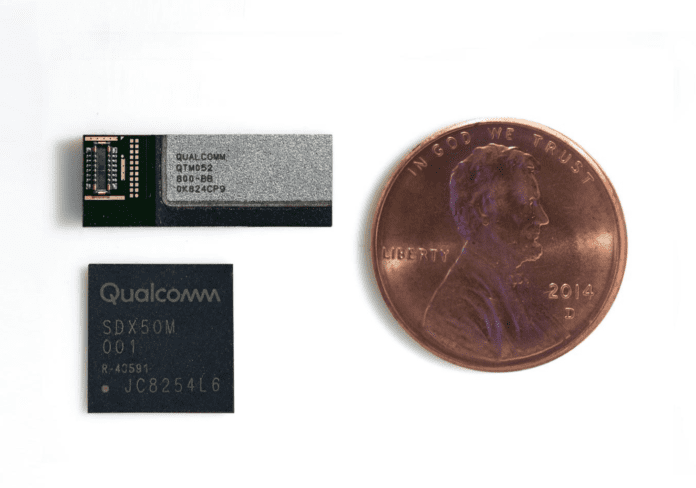Network, device and regulatory aspects of millimeter wave falling in line
The IMT-2020 minimum performance requirements for 5G contemplate a peak downlink data rate of 20 Gbps. To get that kind of speed, high-capacity spectrum in the millimeter wave frequencies is essential. Just look at how Verizon and AT&T are approaching 5G commercialization later this year; the former is using the 28 GHz band to deliver residential broadband and the later is using the same band to offer up standard-compliant mobile 5G.
Ahead of commercialization from the two major U.S. carriers later this year in select markets, millimeter wave is also getting a boost from the silicon/device side and on the regulatory front as the U.S. Federal Communications Commission looks to position the country to be a leader in next-generation cellular networks.
These plans got a major boost in June when Qualcomm announced its QTM052 millimeter wave antenna module, which can fit into a smartphone form factor. Sherif Hanna, director of product marketing, told RCR Wireless News in an interview, “When most people think of 5G, they think of incredibly high data rates. A lot of that conception of what 5G will be is actually dependent on making millimeter wave work.”
But there are challenges. Hanna, noting the propagation characteristics of high-band spectrum, called out small coverage areas, erratic reflective behavior, signal blocking by a device users’ hands or body, as well as signal blocking by transient and static objects like trucks or buildings. “These millimeter wave antenna modules are designed to give mobile devices, including smartphones, millimeter wave 5G connectivity,” Hanna said. “They’re so small, in fact, that they can fit inside the side bezel of the smartphone. Given their size we can fit four of them into the smartphone along the edges.”
Following the release of the millimeter wave modules, last week Motorola announced the moto z3, which is upgradable to 5G with the addition of a clip-on “mod,” which contains Qualcomm modems and the millimeter wave module. Verizon is the device launch partner and confirmed the mod will be available to support its future mobile 5G deployment.
Also on the millimeter wave front, the U.S. Federal Communications Commission (FCC) is making moves to auction off high-band frequencies. Beginning Nov. 14, the FCC will start Auction 101, which covers frequencies from 27.5 GHz to 28.35 GHz. That will be immediately followed by Auction 102, which covers frequencies from 24.25 GHz to 24.45 GHz and 24.75 GHz to 25.25 GHz.
According to the regulatory body, the 28 GHz licenses will be offered in two 425 megahertz blocks allocated by county; the 24 GHz licenses will be offered in seven 100 megahertz blocks based on generic blocks in each Partial Economic Area.

